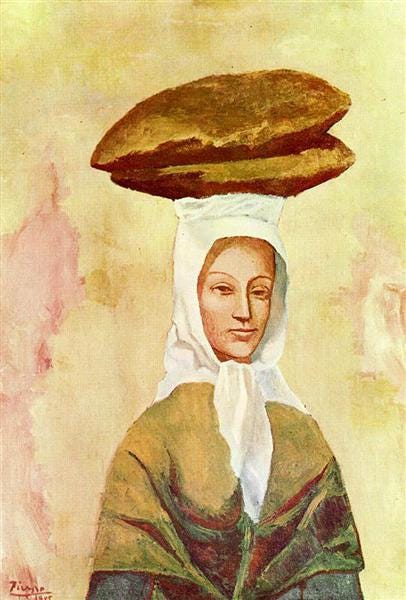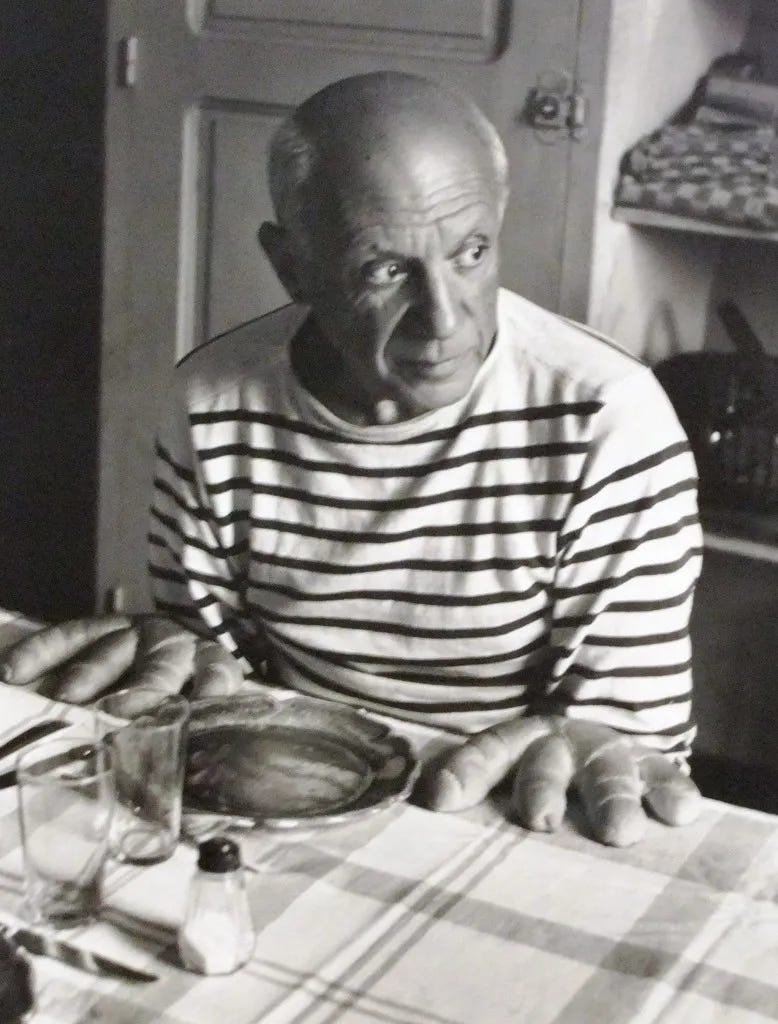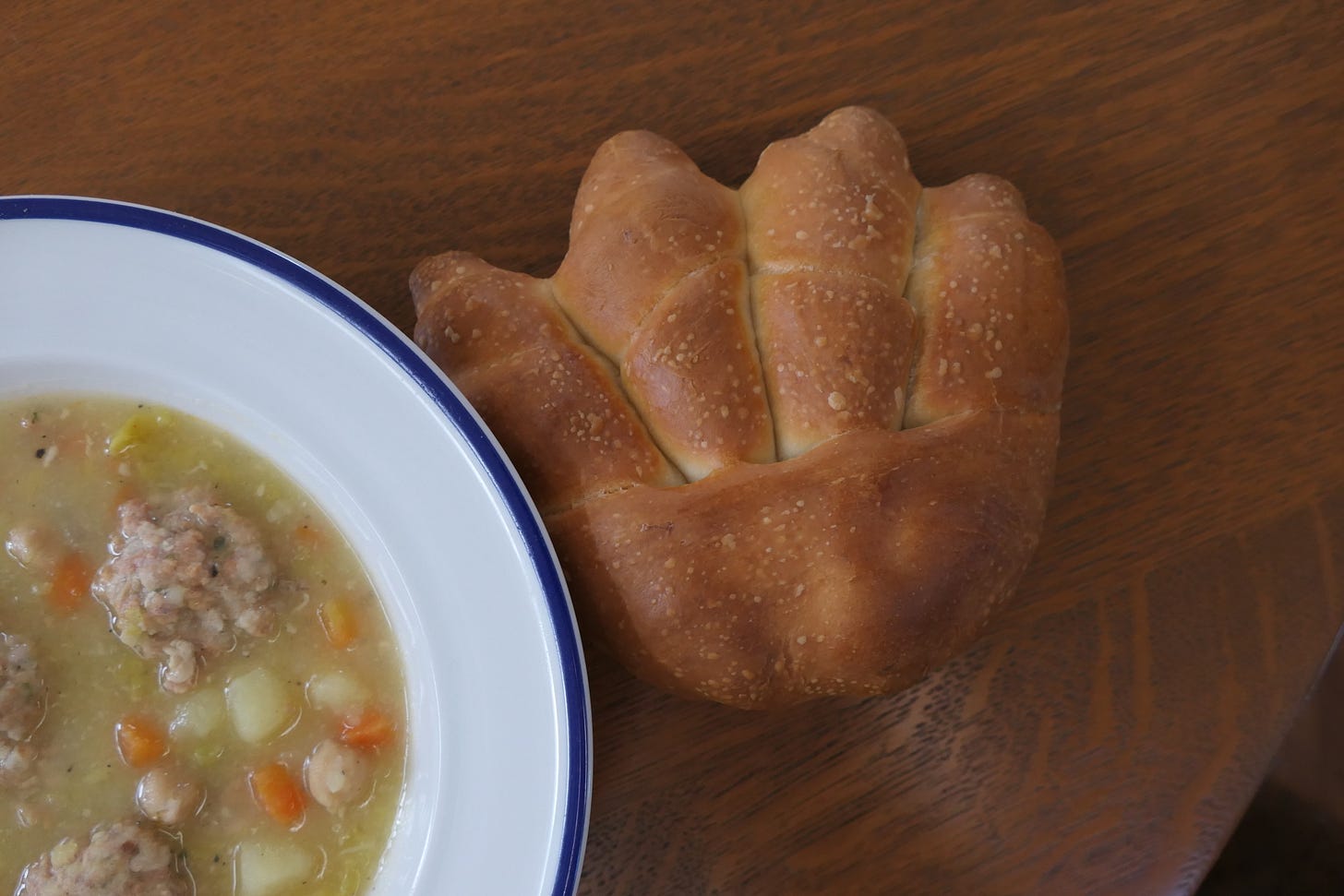Creating a cozy Picasso-style winter meal
Featuring a Spanish soup and forgotten French bread
The perfect way to escape the cold is bread—and I’ve been making a lot of it. This bake, in particular, was a good reminder that bread can be fun, not just functional.
Long before Pablo Picasso was a famous artist, he adventured across the countryside of Spain and France. In 1906, he traveled with a friend to Gósol, a remote village in the Spanish Pyrenees mountains. He worked manual labor and soaked up the gold and rose-colored cliffs and homes of the wild countryside for artistic inspiration, painting at every opportunity.
Picasso lived at the town inn called “La Cal Tampanada,” which was one of the only homes with an oven. On holidays, the inn transformed into a jovial celebration as locals gathered to roast goat and drink aged wine. However, even on the typical day, women from town baked bread in the oven, carrying the loaves home carefully balanced on their heads.
Meals in the Spanish mountains were simple and usually consisted of beans, sausages, wild game, potatoes and eggs. With a fridge full of winter vegetables from a local Portland farm, I was happy to see that the ‘Horta Cocido’ soup recipe from ‘Picasso, Bon Vivant’ provided a way to use some of the turnips I had been neglecting. It is a hearty and warming soup with chickpeas, meatballs, potatoes, cabbage, carrots, turnips spiced with clove and cinnamon.
The bread to accompany the soup was inspired by a 1950s photo of Picasso taken by photographer Robert Doisneau in Vallauris, France. Picasso invited Doisneau to join him for breakfast when he arrived, but it turned into an opportunity for a fun photo shoot with the regional bread called “Main de Nice,” or “Hand of Nice.” From what I can tell, this bread may no longer be common in southern France today.
The Main de Nice recipe from ‘Very Good Bread’ by Melissa Weller reminded me of a compact package of pull-apart dinner rolls with bright citrus flavor from the lemon zest and olive oil added to the dough. Even though the crust it is golden brown and blistered from baking at a high temperature, it is perfectly soft and chewy.
It was fun to serve the bread at the table (and perfect to recreate Picasso’s iconic photo), but my favorite part of baking was the lesson in dough origami. One long rectangular piece of dough transforms into the “hand” shape through simple cuts, rolls, and folds.
Reflecting back on Picasso’s time in the Spanish mountains in the early 1900s, how amazing—and lucky—we are to have an oven in each of our homes to make something as comforting as bread. Sometimes, enjoying a fun and cozy meal is exactly what we need in this moment in time.






The soup sounds delicious and comforting. That photo with the bread hands is freaky! Ha!